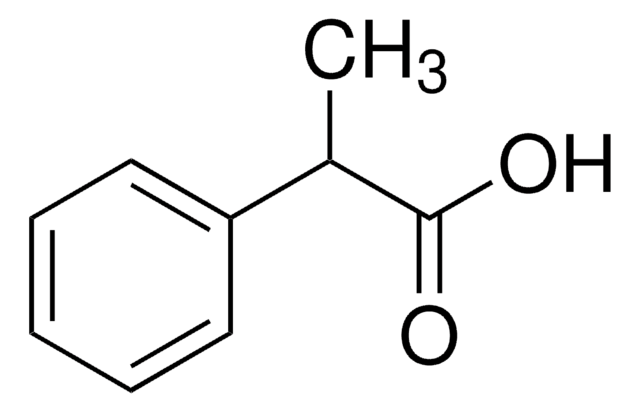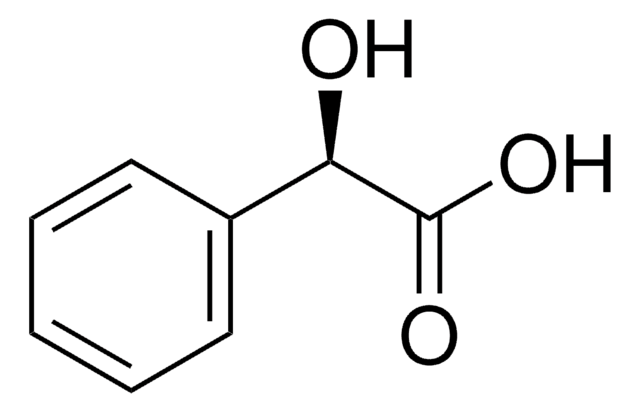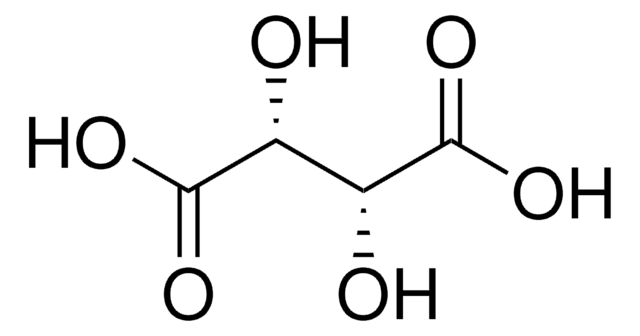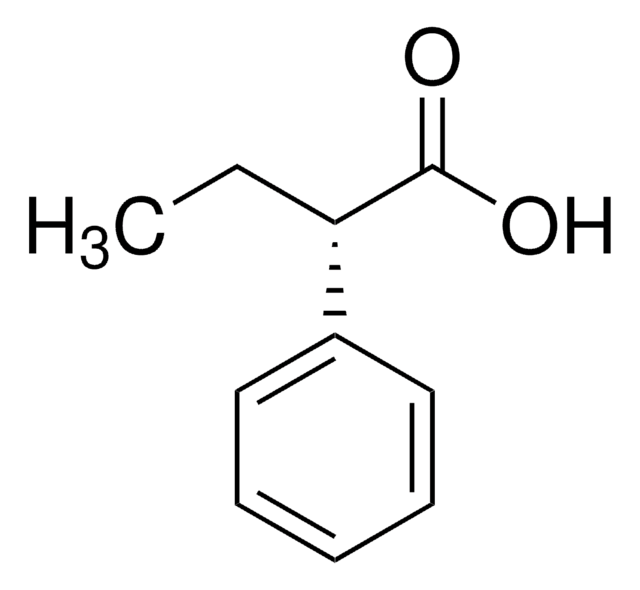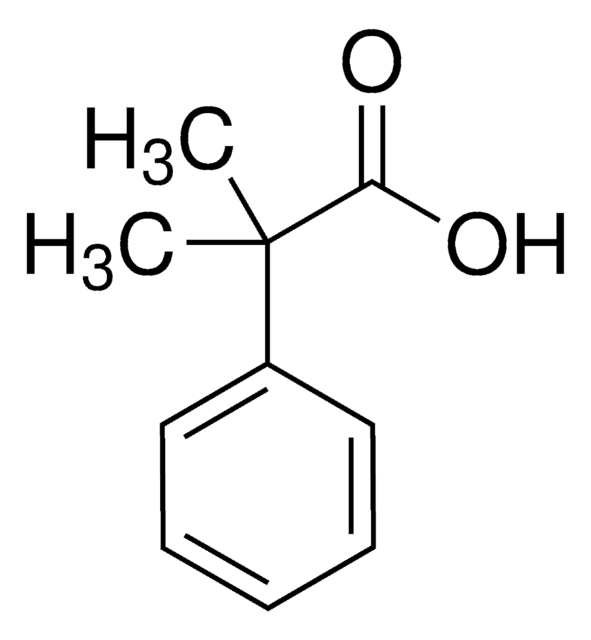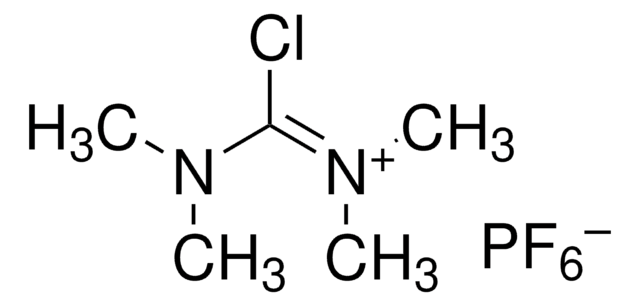279900
(S)-(+)-2-Phenylpropionic acid
97%
Sinónimos:
(S)-(+)-Hydratropic acid, (S)-HTA
About This Item
Productos recomendados
Ensayo
97%
Formulario
solid
actividad óptica
[α]20/D +72°, c = 1.6 in chloroform
pureza óptica
ee: 98% (HPLC)
índice de refracción
n20/D 1.522 (lit.)
bp
115 °C/1 mmHg (lit.)
mp
29-30 °C (lit.)
densidad
1.1 g/mL at 25 °C (lit.)
grupo funcional
carboxylic acid
phenyl
cadena SMILES
C[C@H](C(O)=O)c1ccccc1
InChI
1S/C9H10O2/c1-7(9(10)11)8-5-3-2-4-6-8/h2-7H,1H3,(H,10,11)/t7-/m0/s1
Clave InChI
YPGCWEMNNLXISK-ZETCQYMHSA-N
¿Está buscando productos similares? Visita Guía de comparación de productos
Aplicación
Aplicación
Palabra de señalización
Warning
Frases de peligro
Consejos de prudencia
Clasificaciones de peligro
Eye Irrit. 2 - Skin Irrit. 2 - Skin Sens. 1 - STOT SE 3
Órganos de actuación
Respiratory system
Código de clase de almacenamiento
11 - Combustible Solids
Clase de riesgo para el agua (WGK)
WGK 3
Punto de inflamabilidad (°F)
>235.4 °F - closed cup
Punto de inflamabilidad (°C)
> 113 °C - closed cup
Equipo de protección personal
dust mask type N95 (US), Eyeshields, Faceshields, Gloves
Elija entre una de las versiones más recientes:
¿Ya tiene este producto?
Encuentre la documentación para los productos que ha comprado recientemente en la Biblioteca de documentos.
Chromatograms
application for HPLCNuestro equipo de científicos tiene experiencia en todas las áreas de investigación: Ciencias de la vida, Ciencia de los materiales, Síntesis química, Cromatografía, Analítica y muchas otras.
Póngase en contacto con el Servicio técnico